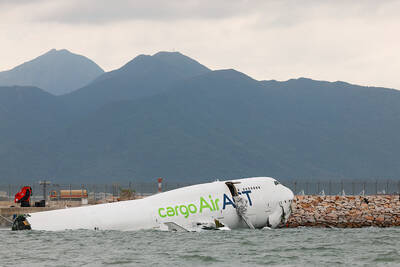Tropical storms have doubled in destructive potential in the past 30 years because ocean surfaces have become warmer, according to a leading climate researcher.
This is the first time that an increase in the size, duration and power of tropical storms has been linked to global warming.
The result could have a significant effect on British weather, and have potentially disastrous consequences for the Caribbean, the west coast of the US and Pacific countries such as Japan.
Kerry Emanuel, of the atmospheric, oceans and climate research department at the Massachusetts Institute of Technology, has studied data from all the severe storms -- or tropical cyclones -- over the past 30 years.
He says they have been more intense and longer in duration, and have generated far more power, than computer models had predicted.
Thermodynamics
Emanuel, an acknowledged world expert on the thermodynamics of tropical cyclone research, told the Guardian that he believed the power of the storms to create huge waves and mix the surface water of the oceans could also effect ocean currents -- ?particularly the Gulf Stream, which sends warm water northwards and keeps Britain's climate milder than it otherwise would be.
Many scientists have predicted that the Gulf Stream could slow or be "turned off" by the effect of increased fresh water entering the Arctic from melting ice.
Greater mixing
But Emanuel believes that the greater mixing of warm water in the tropics could have the opposite effect -- speeding up the currents and driving more warm water north.
Although there is no connection between his research and recent observations in Iceland, temperatures in the North Atlantic have risen notably as as a direct result of a strong current flow pushing farther north.
Emanuel's findings, published in Nature magazine, follow an inconclusive scientific debate about whether the frequency of storms is a natural phenomenon or a result of man-made climate change.
Climate models
Climate models run through computers indicate that storms are likely to become more severe, but this is the first evidence that this phenomenon is already happening.
What is surprising is that the severity is far more pronounced than the computer models have predicted.
According to the paper, the computer models estimated that wind speeds would increase by 2 to 3 percent as a result of an already observed rise in the ocean temperature of 5?C.
Total force
Because of the longer duration of storms, this would increase the total force exerted by the average hurricane by 8 to 12 percent.
However, Emanuel's measurements of real winds show that storms can pick up much greater intensity as the ocean waters mix.
During a storm, the winds cause the warm surface water to mix with the cooler ocean below.
Normally, this mixing would puts a brake on the power of the storm because of the overall reduction in sea temperature caused by the mixing.
But measurements show that it is not just the surface of the sea that has warmed in recent decades -- the layer underneath is also at a higher temperature.
This means that the wave action that mixes the layers does not have such a pronounced cooling effect as before and, as a result, the intensity of the storm remains significantly higher.
Emanuel's view is that at least part of this increase in ocean temperature is caused by man-made climate change.
"Whatever the cause, the near doubling of power dissipation over the period of record should be a matter of some concern, as it is a measure of the destructive potential of tropical cyclones," Emanuel said.
Julian Heming, a tropical prediction scientist with the Met Office in Exeter, said that he did not question Emanuel's measurements.
But Heming pointed out that there was disagreement among scientists about whether the observed trend was man-made or part of a natural cycle.

Indonesia was to sign an agreement to repatriate two British nationals, including a grandmother languishing on death row for drug-related crimes, an Indonesian government source said yesterday. “The practical arrangement will be signed today. The transfer will be done immediately after the technical side of the transfer is agreed,” the source said, identifying Lindsay Sandiford and 35-year-old Shahab Shahabadi as the people being transferred. Sandiford, a grandmother, was sentenced to death on the island of Bali in 2013 after she was convicted of trafficking drugs. Customs officers found cocaine worth an estimated US$2.14 million hidden in a false bottom in Sandiford’s suitcase when

CAUSE UNKNOWN: Weather and runway conditions were suitable for flight operations at the time of the accident, and no distress signal was sent, authorities said A cargo aircraft skidded off the runway into the sea at Hong Kong International Airport early yesterday, killing two ground crew in a patrol car, in one of the worst accidents in the airport’s 27-year history. The incident occurred at about 3:50am, when the plane is suspected to have lost control upon landing, veering off the runway and crashing through a fence, the Airport Authority Hong Kong said. The jet hit a security patrol car on the perimeter road outside the runway zone, which then fell into the water, it said in a statement. The four crew members on the plane, which

Japan’s ruling Liberal Democratic Party (LDP) and its junior partner yesterday signed a coalition deal, paving the way for Sanae Takaichi to become the nation’s first female prime minister. The 11th-hour agreement with the Japan Innovation Party (JIP) came just a day before the lower house was due to vote on Takaichi’s appointment as the fifth prime minister in as many years. If she wins, she will take office the same day. “I’m very much looking forward to working with you on efforts to make Japan’s economy stronger, and to reshape Japan as a country that can be responsible for future generations,”

SEVEN-MINUTE HEIST: The masked thieves stole nine pieces of 19th-century jewelry, including a crown, which they dropped and damaged as they made their escape The hunt was on yesterday for the band of thieves who stole eight priceless royal pieces of jewelry from the Louvre Museum in the heart of Paris in broad daylight. Officials said a team of 60 investigators was working on the theory that the raid was planned and executed by an organized crime group. The heist reignited a row over a lack of security in France’s museums, with French Minister of Justice yesterday admitting to security flaws in protecting the Louvre. “What is certain is that we have failed, since people were able to park a furniture hoist in the middle of